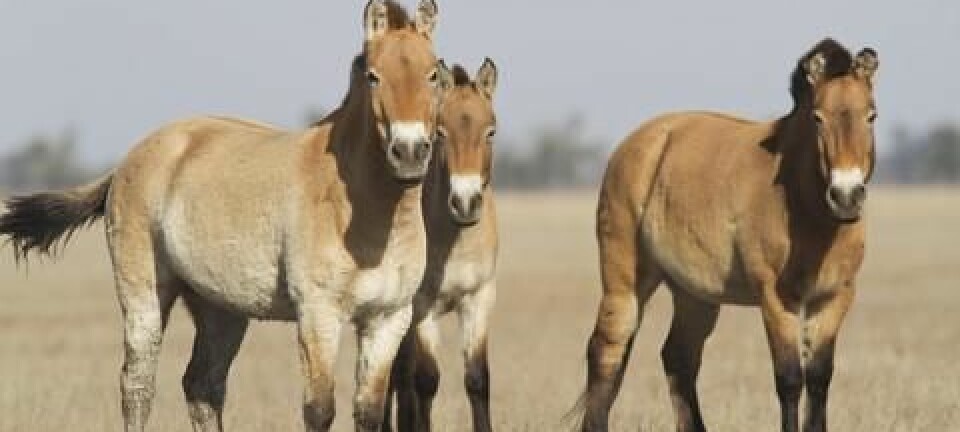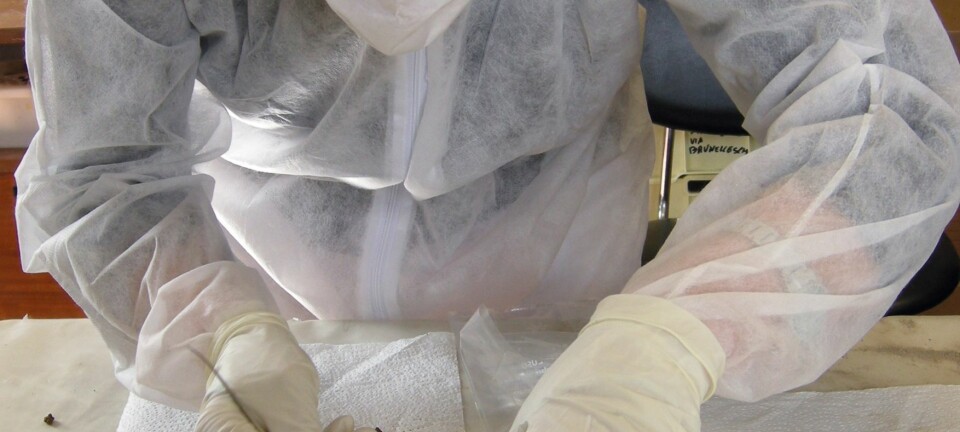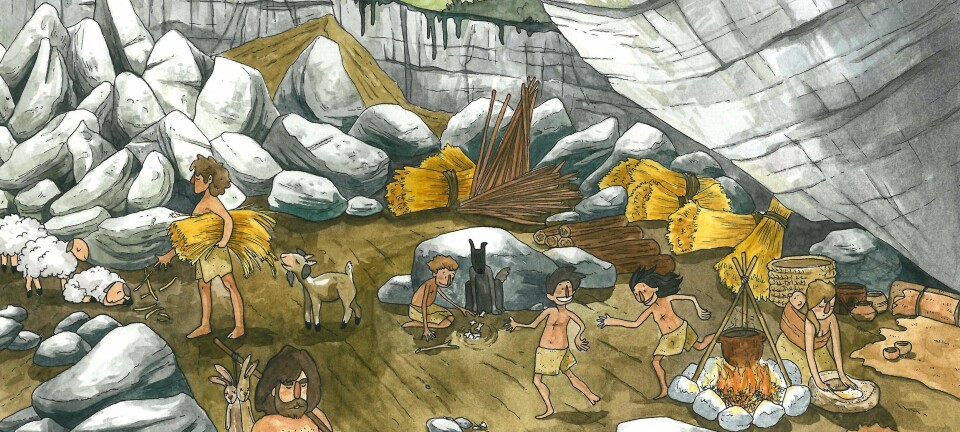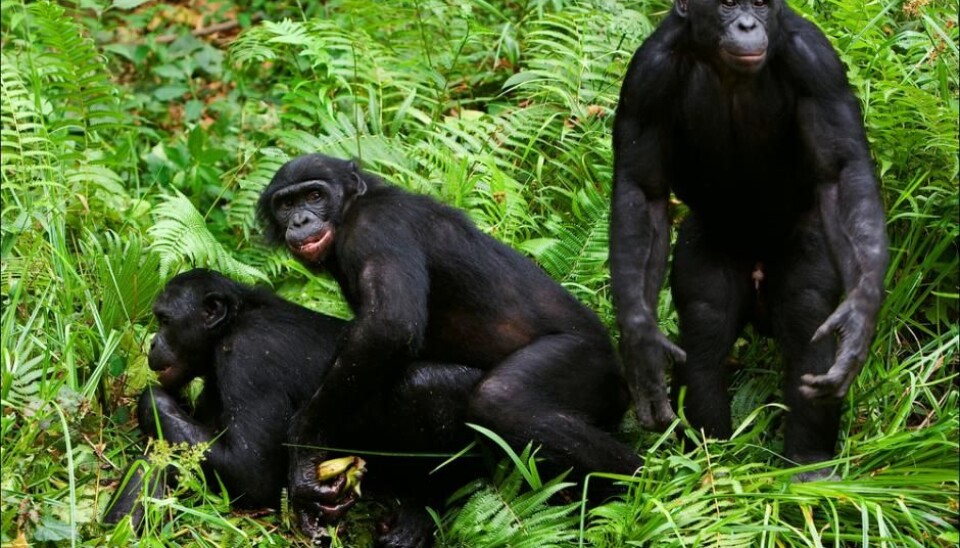
New evidence that early chimps and bonobos interbred
Chimpanzees and bonobos have not always been able to keep their hands off each other. A new discovery could change our perception of how new species form.
Salacious affairs between our nearest relatives, chimpanzees and bonobos, have been uncovered by a group of scientists.
The scientists were analysing the DNA of wild chimps in Africa when some bonobo genes appeared in their results.
At first, they simply thought they had made a mistake since the two species had always been physically separated by the Congo River.
“When we first saw bonobo genes in the chimpanzee genome, we thought ‘no, no, no,’” says co-author Christina Hvilsom from the Center for Zoo and Wild Animal Health at Copenhagen Zoo, Denmark. “But it turned out to be correct. The species had mixed their genes, which was really surprising.”
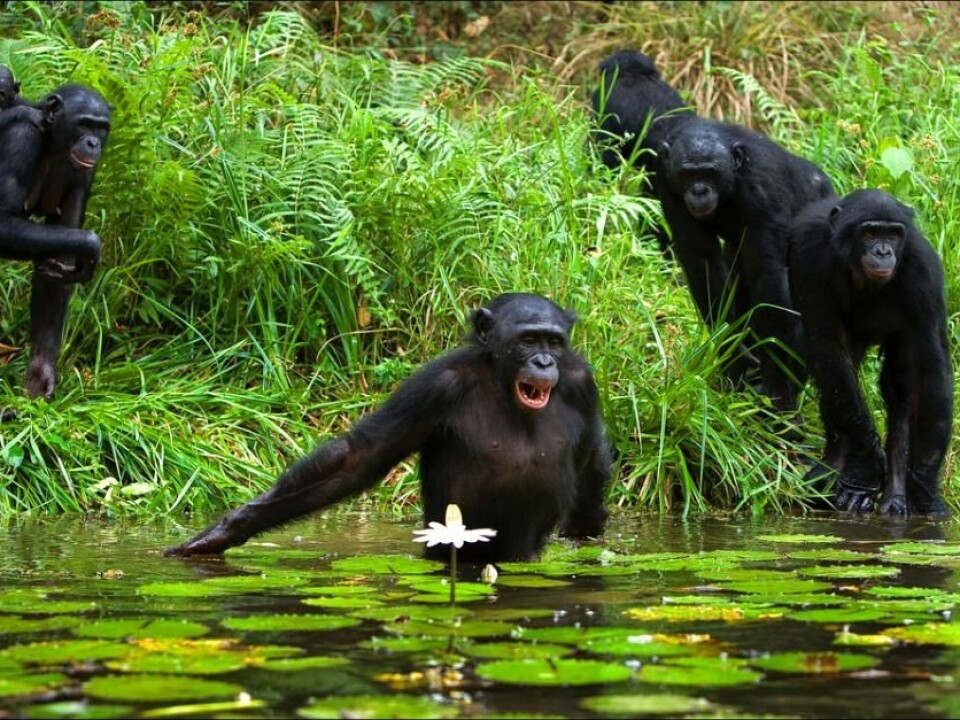
The new results are published in the journal Science.
Dried up Congo River led to ape hanky-panky
It was previously believed that populations of African apes had been separated by the Congo River. But this is false, says Hvilsom.
It made sense because both chimps and bonobos are poor swimmers and would have drowned if they had tried to cross the water, she says.
“Our study suggests that there must have been dry periods where the river level was low so the apes could’ve come into contact with one another,” says Hvilsom.
The chimpanzees’ DNA showed that bonobo genes had been introduced twice: first, around half a million years ago, and again 200,000 years ago.
Read More: Ancient horse DNA can help us understand evolution
“Strange things can happen in half a million years”
It is a surprising find, but on the other hand it should not be that surprising, says Assistant Professor Kasper Munch Terkelsen from Aarhus University, Denmark. He studies genetic sequencing of primates and has read the new study.
“A lot of really strange things can happen in half a millions years,” he says.
“Whether it was because the river ran dry, or because some apes accidentally crossed the water on a floating tree trunk, we don’t know. But with this study, we can see that their genes did mix,” says Terkelsen.
Read More: Drought in the Horn of Africa delays migrating birds
Tree of Life may need to be trimmed
The discovery is particularly interesting as it could change our existing perception of species development, says Terkelsen.
“When you imagine the tree of life today, we imagine lots of species that have branched out from a few original species--the trunk of the tree,” he says.
But now it seems that species do not necessarily branch out and diversify all of the time. Instead they can meet again and share their genes at a later date.
“This is an exciting find,” says Terkelsen.
Read More: Bird study reveals a key assumption in evolution theory is false
Our own genes show the same patterns
This is one of the most important findings in the study, says Hvilsom.
“Our findings call into question the way we think about speciation, and it’s clear that species are not as strictly divided as we once believed. Species are not static but can be linked via the exchange of genes over time,” she says.
The same has occurred throughout our own development, as demonstrated by the existence of DNA from now extinct hominids, such as Neanderthals, within our own genome.
And it is just as likely to have happened in many other species, says Terkelsen.
“It would be very strange if other species had developed in a completely different way,” he says.
Read More: Scientists do away with Darwinian tradition
Study helps conservation of chimps
The results could also help conservation efforts.
By analysing the entire genome of 65 chimpanzees and comparing their geographical distribution with each other, the scientists found that they could precisely identify where an individual ape came from.
And this could be vital information to help authorities conserve chimpanzee populations today.
“Chimpanzees are often victims of illegal trade, and therefore it’s essential to find out where any confiscated apes have originated from. Then we can return them to at least their original location,” she says.
Apes are specially adapted to a particular location but it’s a process that takes thousands of years to evolve, and so it’s important to return them back to their original habitat, says Hvilsom.
“In a world where every single individual counts towards the survival of the species, this will be an essential tool in the effort to return illegally caught apes back into their original location,” she says.
-------------
Read the Danish version of this article on Videnskab.dk
Translated by: Catherine Jex
